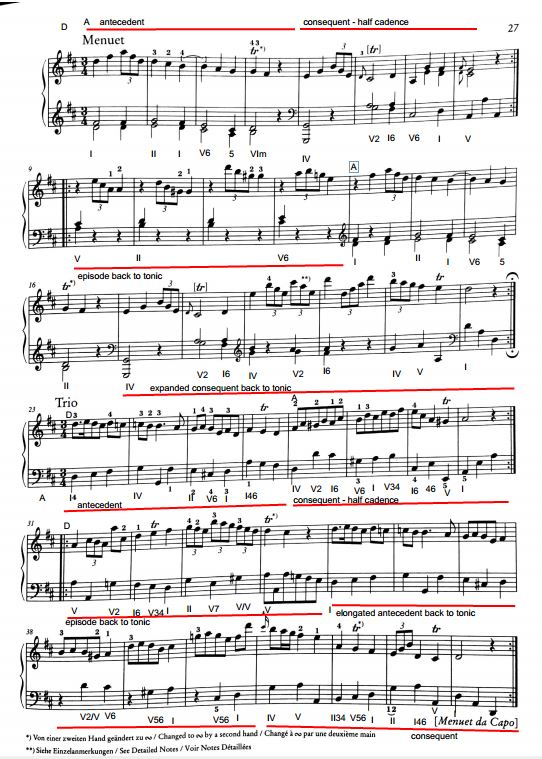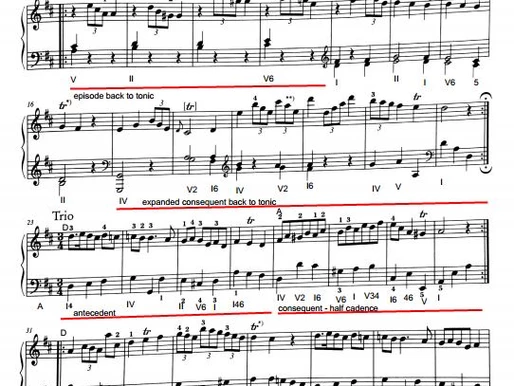Haydn Sonatas, Uncategorized
Haydn Sonata Hob. XVI.4 – Menuet and Trio
Summary
This is a standard Menuet and Trio. Both of them written in the A-B-A’ form. The variations in A are implied by the return to the tonic.

The first phrase “A” features the use of the triplet and the syncopation. It is elegantly but simply cut and it owes its sophisticated glare to the economic use of rhythmical resources. We can only find crotches and one triplet in the antecedent with the addition of minims in the consequent. It is clear that the consequent slows down the rhythmic pace and contributes to reaching its half cadence un-abruptly.
We can play the entire treble of the antecedent using almost exclusively finger movement with the exception of the forearm movement required to play the repeated notes. The same applies to the bass line of the antecedent and consequent. We can certainly make use of rotation to facilitate the approach to the first third of the consequent treble.
Expression-wise, the syncopation is the climax of the antecedent. The bass line, though musical, is only there for support reasons and should never disturb the treble line. We translate the same dynamic line to the consequent, this time, climaxing on the trebled V chord and fading out elegantly towards the half cadence.
The second section starts with a short episodic “B” phrase, half the size of “A”. “B” is thinner in texture, configuring an almost monodic line, and features only one element, the triplet. Its propelling quality – also derived from the fact that it is standing on the dominant – makes it highly contrastant with “A” both in character and texture. Technically speaking we apply the same resources we did on “A”
We finally return to “A” which is varied in order to lead back to the tonic instead of the dominant.
Trio
“A” features steady rhythm combined with two contrasting registral directions. Antecedent goes down while consequent goes up. It is interesting to remark that Haydn uses a very simple rhythmic line, leaving enough “space” for the registral contrast to gain importance. Both bass and treble can be played using finger movement with the occasional use rotation to facilitate the approach of the octaves. Expression-wise, the antecedent climaxes twice: first in the appogiatura of bar 24 and then, less pronouncedly, in the cadence of bar 26. The consequent builds up from bar 27 until it reaches 29 where the strongest accent occurs.
“B” is episodic and it is mainly meant to bring the music back to tonic. To enhance its contrasting effect, Haydn uses triplets profusely. The use of tuplets destabilizes the phrase while it turns it into the perfect comma between “A” and “A”’.
“A”’ exhibits both an elongated antecedent, needed to reach back the tonic instead of the dominant as in “A”’s consequent, and an elongated consequent which fits a small codeta using a theme-linking triplet.
#JuanRezzuto #Haydnproject #HaydnProject #pianolessonslondon #pianolessons #pianolessonsforadults

